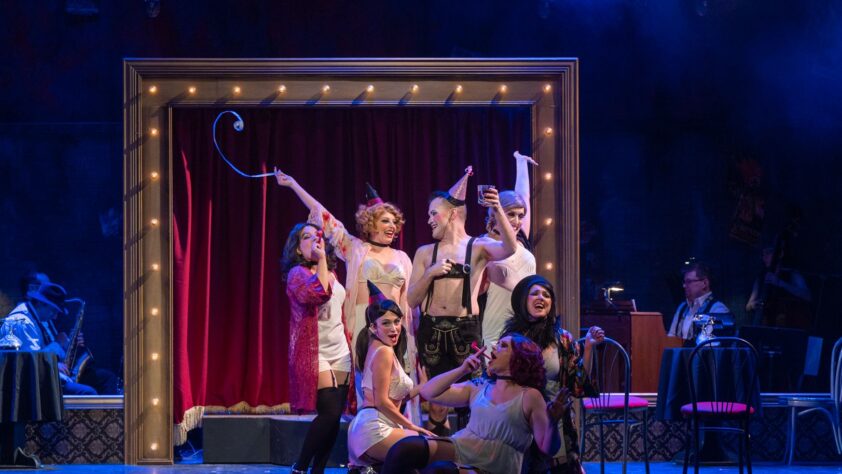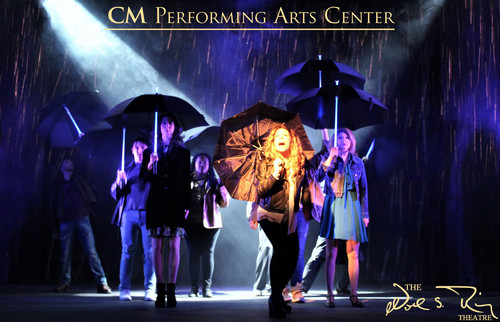Coinciding with the Met Gala’s Gilded Age theme, another late 19th-century homage to the era of robber barons and dollar princesses was CM Performing Arts Center’s opening night of “Hello, Dolly!”
The last show in this season’s repertory rounded out CM’s 35th anniversary season with the apropos undertaking of a Golden Age musical with its complex set design, daring crescendo vocal work, and costume variety and splendor that could rival an HBO production.
In the first act alone, there are eight scene changes spanning a whole Metro North Line from 14th street, to Grand Central, to Yonkers.
But, under the direction of CM favorite Matthew W. Surico, the production of “Hello, Dolly!” lived up to the spectacle, glamour, and laughs of the Jerry Herman musical based on a Thornton Wilder play.
The tale of a scheming and shrewd matchmaker, Dolly Gallagher Levi, who has so many side hustles you’d think she was a millennial, is brought to life in Surico’s vision with his emphasis on the cast’s timing and flow that keeps the multiple subplots clear and the fast-paced language and music savored.
Courtney O’Shea as Ermengarde and Sarah Minto as Minnie performed what can only be described as vocal physical feats of comedy, with both characters’ guttural responses to various foils in the musical.
In a particularly comical scene, Ermengarde awaits her time in front a judge and lets out an “I Love Lucy”-like wail that is asked to be repeated, and as if on a recording, nails the second iteration perfectly.
Costume designer Ronald R. Green III had a Herculean task before him to dress over two-dozen cast members at a time for transitional and blowout scenes, and in Gilded Age crinoline and hoop skirt-heavy attire, no less, but the beautiful rainbow play of color created a vivid and crucial scene change on more than one occasion.
With the most famous and title song of the play, Green’s waiters, in black, white, and red formal wear, gave a burlesque feel and complimented the riveting dance sequences for the number choreographed with clear joy and reverence to the original score by Kevin Burns.
Adam Mosebach and Richie Castronova as the Cornelius Hackl and Barnaby Tucker were an excellent duo, anticipating and building on each other’s comedic expressions of their respective roles.
Although more than a 10-year age gap is between the two buddies, Mosebach was able to add a light-handed charisma to the bumbling Hackl, and Castronova was able to add alternating precociousness and awe to the single-minded Barnaby.
Laurie Lamar Roundsman as Mrs. Dolly Gallagher Levi was a star, and played each moment in character as both diva and mother to the plans she set out for the supporting roles.
Roundsman, often the central point of focus in a scene, managed to hold the audience’s attention with her inimitable combination of grace and moxie, playing the ever clever and sometimes sensitive Dolly.
While Roundsman is clearly a leading lady with a powerful voice, she manages to play the quiet moments, like when Dolly is speaking to her dearly departed husband, Ephraim, with dignity and emotion that is expected in dramatic rather than musical comedy acting.
Marc Strauss as Horace Vandergelder delightfully played a quasi-villain and love interest as the grumpy and authoritative “half millionaire of Yonkers.”
Strauss carries his character in a full arc, from a shrewd businessman looking to apply his managerial acumen to matchmaking to a softer, generous, and somewhat razzled old bachelor ready to fall at the feet of Dolly (even if through her manipulations).
The over-arching mural backdrop of 19th-century architecture and the homey store interiors set the tone for the richness of costumes and the intricacy of choreography, with scenic painters Mark Lucas, John Mazzarella and Leia Papayannakos, and head constructor Chad Hulse capturing the liveliness of the show in still-life renditions.
Read the Review here: https://www.suffolkcountynews.net/stories/hello-dolly,90291





